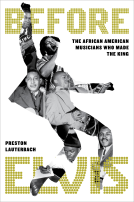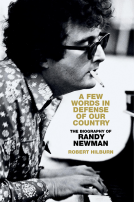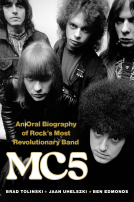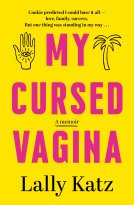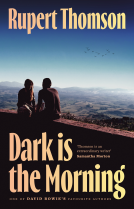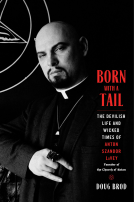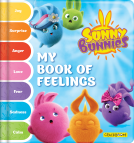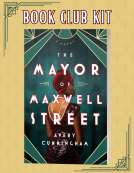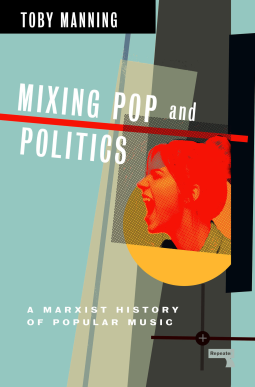
Mixing Pop and Politics
A Marxist History of Popular Music
by Toby Manning
This title was previously available on NetGalley and is now archived.
Send NetGalley books directly to your Kindle or Kindle app
1
To read on a Kindle or Kindle app, please add kindle@netgalley.com as an approved email address to receive files in your Amazon account. Click here for step-by-step instructions.
2
Also find your Kindle email address within your Amazon account, and enter it here.
Pub Date May 14 2024 | Archive Date Aug 27 2024
Repeater Books | Repeater
Talking about this book? Use #MixingPopandPolitics #NetGalley. More hashtag tips!
Description
A radical history of the political and social upheavals of the last 70 years, told through the period's most popular music.
Mixing Pop and Politics is not a history of political music, but a political history of popular music. Spanning the early 50s to the present, it shows how, from doo-wop to hip-hop, punk to crunk and grunge to grime, music has both reflected and resisted the political events of its era.
Mixing Pop and Politics explores the connections between popular music and political ideology, whether that’s the liberation of rock’n’roll or the containment of girl groups, the refusal of glam or the resignation of soft rock, the solidarity of disco or the individualism of 80s pop.
At a time when reactionary forces are waging political war in the realm of culture, and we’re being told to keep politics out of music, Mixing Pop and Politics is a timely, original and joyful exploration of popular music’s role in our society.
Available Editions
| EDITION | Other Format |
| ISBN | 9781913462673 |
| PRICE | $35.00 (USD) |
| PAGES | 477 |
Available on NetGalley
Average rating from 7 members
Featured Reviews
 Joshua W, Educator
Joshua W, Educator
A very engaging examination of the intersection of pop culture and ideology; this serves as a good contemporary piece to accompany curriculum focused on the Culture Industry and the Frankfurt School.
Toby Manning, Mixing Pop and Politics, A Marxist History of Popular Music, Repeater, May 2024.
Thank you, NetGalley, for providing me with this uncorrected proof for review.
Toby Manning’s history of popular music, with its introductory references to a range of philosophers, is initially daunting to the non-philosopher. However, this is a treasure for the reader with a broad knowledge of philosophical understandings and philosophy. For other readers this somewhat dense early narrative can be easier to navigate through the later chapters’ attention to popular music from the early 1950s to now. It is in concentrating on this aspect in the chapters following the introduction that I became engrossed in the discussion and analysis of the music; the period in which it was written, produced and received; the political agendas to which it responded and its impact on the political environment.
The 1950s chapter, “Raise a Fuss, Raise a Holler”: Rock’n’Roll, Doo-Wop and the 50s (1953 – 58) resonates with its references to television series as well as music and politics. The references to race and criticism on that basis focusses on what this book can bring to political awareness – Back to the Future seems different after reading about the appropriation of Chuck Berries’ song and distinctive walk. It is the constant recognition that all one found attractive about those television series and songs must be reconsidered that makes this such a demandingly poignant read.
Chapter 2, “In Beautiful Dreams!: Morbid Symptoms, Dream-Work and Fordist Pop (1958 – 64) is another wake up call to readers who listened avidly to the wireless as we were told that conformity was positive, the suggestions of restiveness flattened by plaintiveness of songs such as Will you Still love Me tomorrow? And the references to The Rag Trade. I’m Alright Jack ring nostalgic bells, even if they are suspect.
Chapters 3 (“We are All Together” …1964 – 68); 4, (“Forces of Chaos and Anarchy” ...1968 -71) and 5, (“The Children of the Revolution” …1971-74) move from comfort to the demands for change made in the 1970s. Here, Manning refers to the 1972 Equal Rights Amendment, Spare Rib, The Liver Birds and Man About the House, all of which will resonate with many audiences of the 1970s and Helen Reddy’s I Am Woman has lasted well beyond. Manning’s understanding, that becomes that of the reader, of the radical and reactionary conflicts drawn in the cultural world as well as the political is a revealing read.
How it compares with the 1980s cultural horizon, 1980s economic ideology is another revelation, so much more easily understood through the material Manning uses so well – popular music, film and television. War – not just those that created headlines in Western media, but the ideas reflected in song add another dimension to the discussion of capitalism that is at the core of this chapter.
And so, through the remaining chapters, 1988-1992, 1993 – 2001, 2008 – 2015, and the last, covering 2015 to 2020 where “Longing for Change: The Rebirth of Radical Pop and Politics” creates an uneasy note, to a conclusion in which this is intensified by a somewhat pessimist account of where history currently stands. A relief is Manning’s own optimism, reflected in the glimmers of optimism he weaves around learning from history. The Covid pandemic, the role of lockdowns and the importance of its cultural impact is briefly discussed. The role of nostalgia, undermining the assumption that old songs depart, overtaken by the new is an essential part of the round up of the detailed material which, at its heart sees popular music as ‘adversarially’ political.
The material is ably referenced through endnotes for each chapter.
 Michael J, Educator
Michael J, Educator
You've got to admire Toby Manning's ambition and, remarkably, he delivers on it. The scope of "Mixing Pop and Politics" is striking - a Marxist history of popular music that ranges from 1953 to today without flagging or focusing unduly on the more boring bits. He manages to balance breadth and depth well, offering both an overview of a period, for example 1964-68 in Chapter 3, and generally sharp and open-minded characterisations of individual records, held together by all the hauntological, Marxist and post-structuralist theory you can handle. There are some great lines: "Glam is the cultural logic of the era's industrial militancy" or (of Abba's 'SOS') "its sonic sumptuousness enhancing its affective austerity" and you've got to admire his ability to vary how he describes particular songs, singers etc without repeating himself. It's not perfect, of course - it's understandably US & UK-centric and there are some, if remarkably few, mistakes (e.g. Bob Marley's albums weren't "slavered with rock-sessioner overdubs" after Burnin' and not really there either) and there's necessarily in a book of this size plenty of observations (e.g. to Bryan Ferry as automaton) that I would have loved to have had unpacked. An impressive and aesthetically fair-minded achievement, unless you're a Phil Collins fan. There's really no love lost there.
 Angie M, Reviewer
Angie M, Reviewer
Overall, it's an interesting book that looks at popular music from a unique angle and gets you to see popular music in a different way. As an outspoken socialist and music blogger I was really looking forward to reading this book. It's well organised and planned with the chapters covering different eras in music and the author justifies very well why the book is divided into those chunks of years. I'm glad it wasn't divided by decades because the chapters would be too long and dynamic decades like the 60s wouldn't be done justice in one chapter. I loved both the analysis of politics and music and I think the author is insightful and passionate about both subjects. I know that very few songs are truly socialist, but it is cool how you can find socialist messages where you don't expect them and I think that's the fun of analysing music, everyone has their perspectives and when a song is put out there it's up to the audience to interpret as they wish.
The cons of this book are that it's not written for a general audience and it has a very academic feel and that can make it a difficult read and harder to win people over to Marxism. It's a very long book at over 500 pages long and I think it could have easily been divided into multiple volumes. That said, I think it's an excellent book for university students who are doing a project or writing an essay about popular music and left wing politics. I wouldn't say it's a must-read, just a good book for a certain niche: students doing research and lefty academics who.love music.
Readers who liked this book also liked:
Carine Laforest;
Children's Fiction
We Are Bookish
Historical Fiction, Literary Fiction, Multicultural Interest
Fumiyo Kouno
Arts & Photography, Comics, Graphic Novels, Manga, Reference


